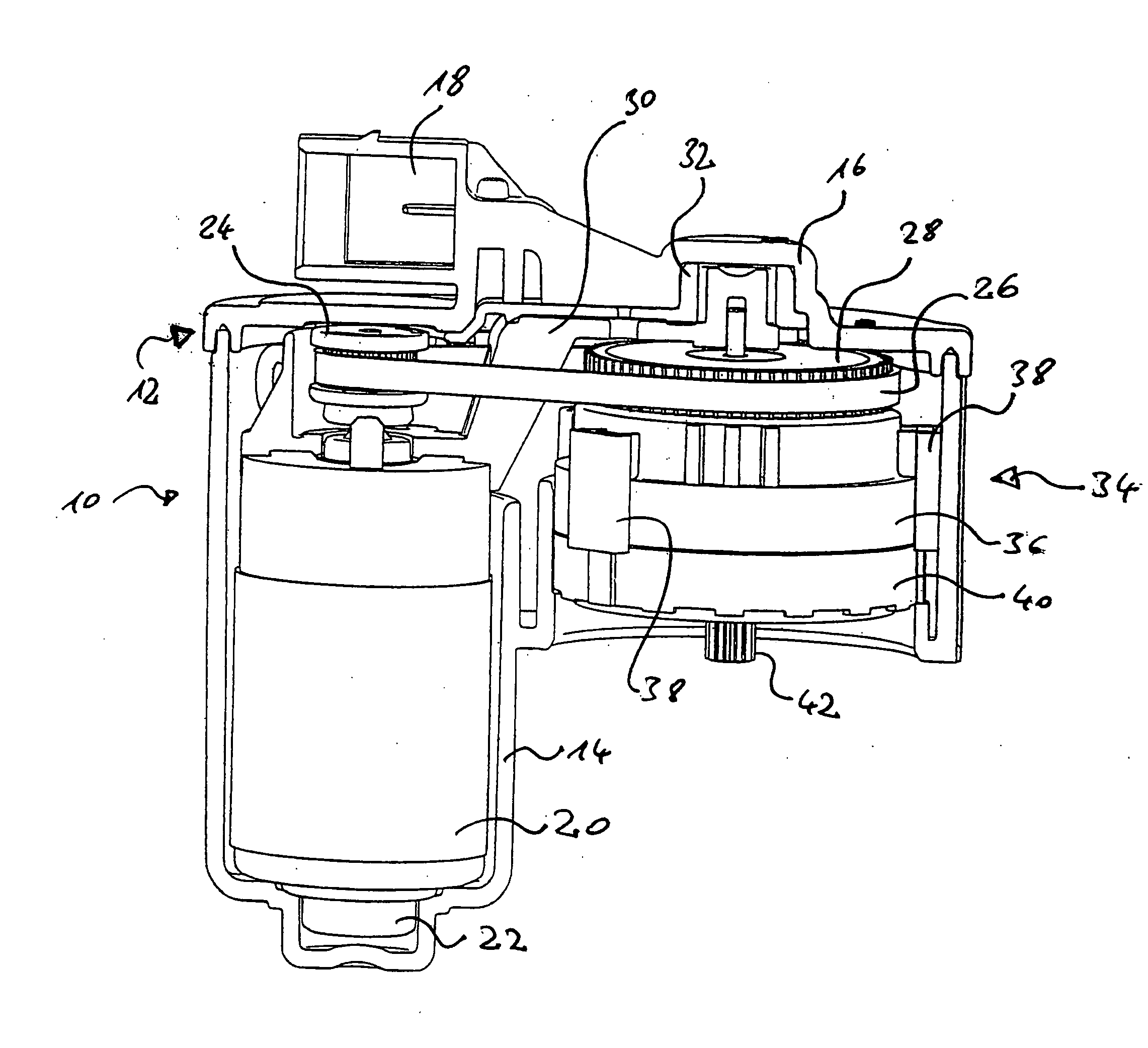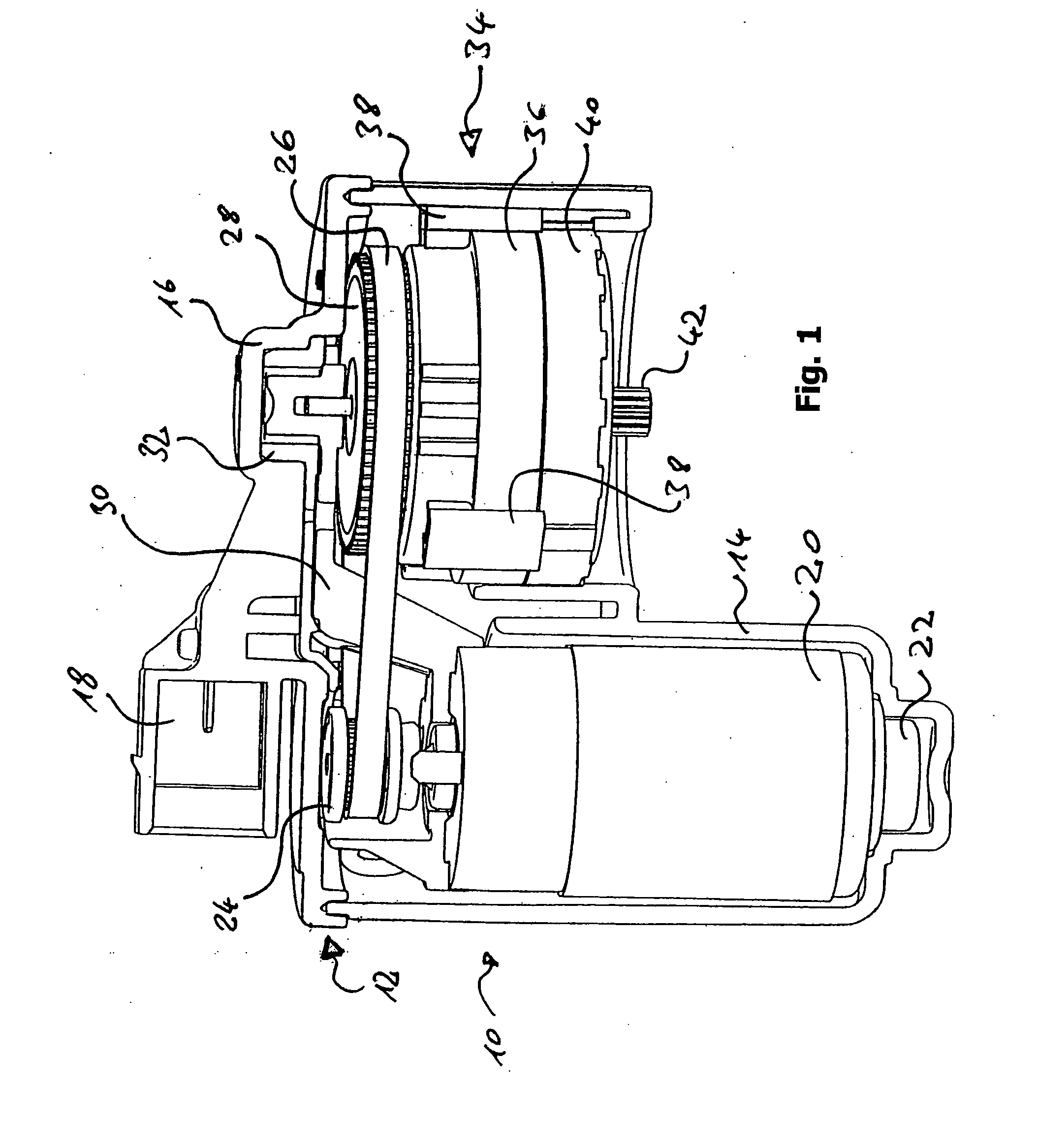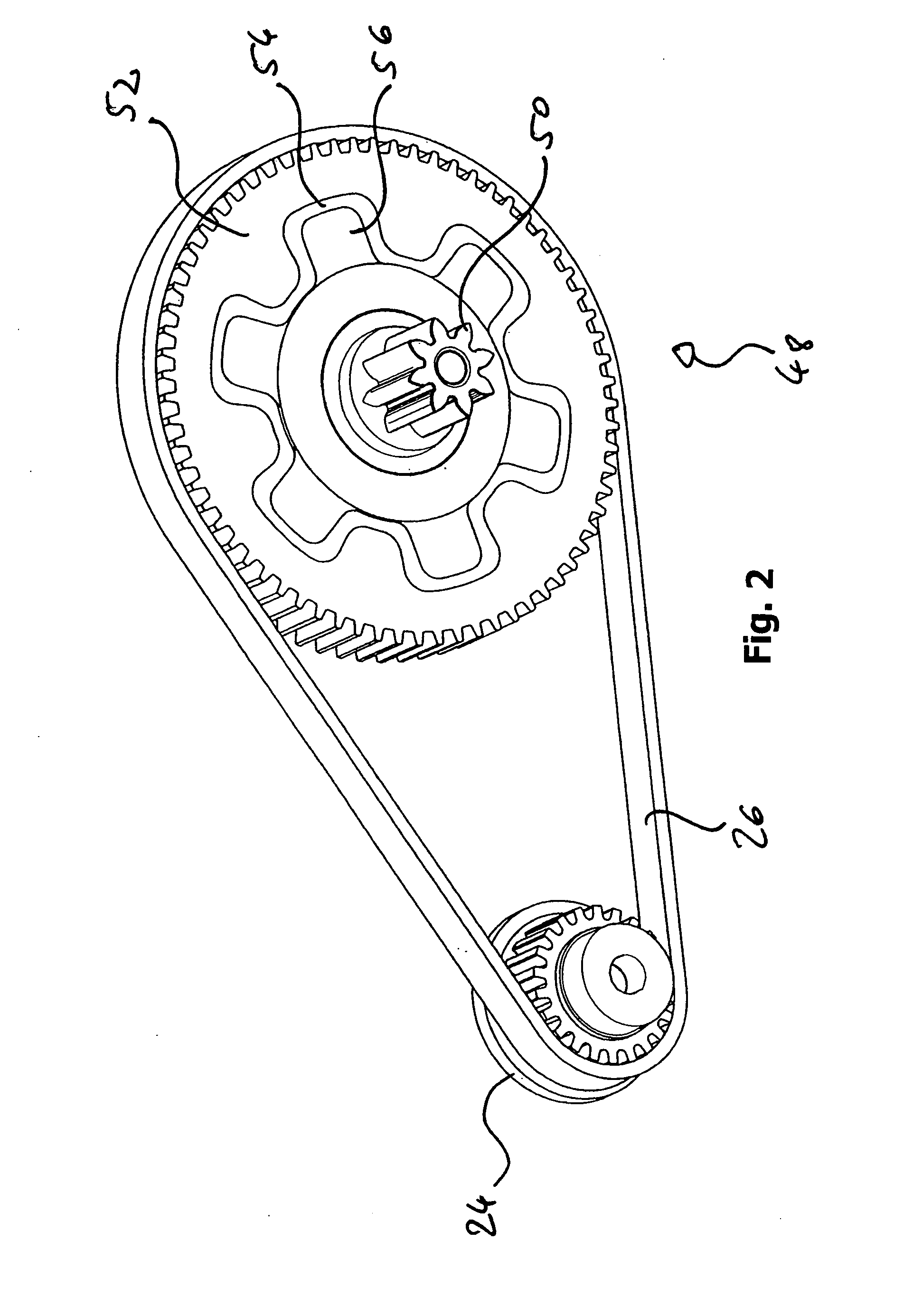Reduced-Noise Electric Brake Actuator
a technology of electric brake actuator and reduced noise, which is applied in the field of brakes, can solve the problems of affecting the precision of the torque transmission of the entire gear assembly, and the failure to achieve the expected noise damping of the entire brake actuator,
- Summary
- Abstract
- Description
- Claims
- Application Information
AI Technical Summary
Benefits of technology
Problems solved by technology
Method used
Image
Examples
Embodiment Construction
[0033]An embodiment of a brake actuator which can be actuated by an electric motor is described in the following. The described brake actuator delivers a torque which can be used to actuate a vehicle brake (not represented).
[0034]FIG. 1 shows a partial section through a brake actuator 10 with an actuator housing 12 consisting of a housing body 14 and a housing cover 16. The housing cover 16 includes a connection socket 18 and is seated on the edge of the housing body which is at the top in FIG. 1. The connection socket 18 is electrically connected to the connections of an electric motor 20.
[0035]The electric motor 20 is held with a precise fit in a recess of the housing body 14 and is supported at its bottom end at the bottom of the housing body 14 by means of an element 22 of vibration-damping material. The electric motor 20 bears a first toothed belt pulley 24 on its side which faces the housing cover. This first toothed belt pulley is connected to a shaft of the electric motor 20...
PUM
 Login to View More
Login to View More Abstract
Description
Claims
Application Information
 Login to View More
Login to View More - R&D
- Intellectual Property
- Life Sciences
- Materials
- Tech Scout
- Unparalleled Data Quality
- Higher Quality Content
- 60% Fewer Hallucinations
Browse by: Latest US Patents, China's latest patents, Technical Efficacy Thesaurus, Application Domain, Technology Topic, Popular Technical Reports.
© 2025 PatSnap. All rights reserved.Legal|Privacy policy|Modern Slavery Act Transparency Statement|Sitemap|About US| Contact US: help@patsnap.com



